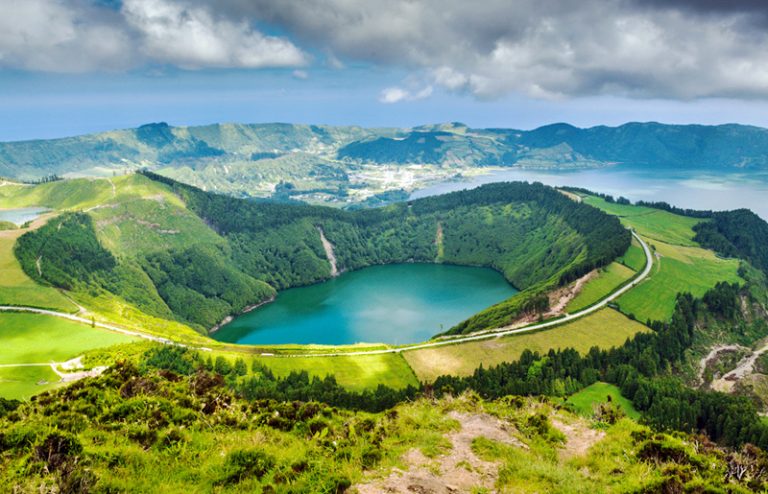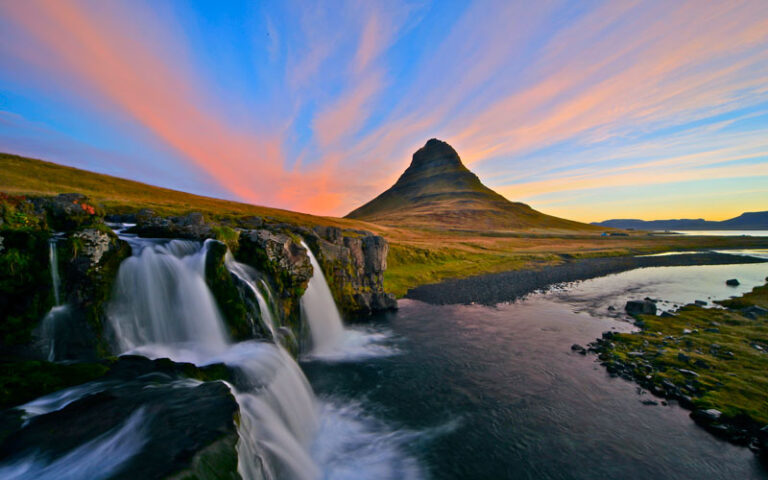Iceland In October: 55 things to see and do on your school trip
October is a great time to visit Iceland. This time of year is less busy than the summer months yet the weather is still warm enough to pack in lots of exciting activities.
We’ve put together some inspiration, whether you’re looking to explore, relax or get your geography geek on in the land of fire and ice.
Iceland in October: For explorers
For those that like a more active trip, Iceland in October has lots to offer. Whether you want to hike, swim, or fly (yes, fly!) there’s so much to experience. No matter how you choose to explore, you’ll experience breathtaking scenery from the northern lights to the golden circle.
Grab your hiking boots and waterproofs and give some of these activities a go!
Golden Circle tour
The golden circle is a 300km route of Iceland’s most popular attractions. A golden circle tour is a good opportunity to tick off a lot of your Iceland bucket list experiences.
Gullfoss- Known as the ‘Golden Falls,’ Gullfoss is one of the most powerful waterfalls in Iceland. The water plummets 32 metres into the river gorge of Hvita.
Geysir Geothermal Area- The hot spring is part of Haukadalur Valley and is famous for being the home of the geyser, hence the name! The boiling water springs into action every 5 to 10 minutes and can reach heights of over 40 metres.
Thingvellir National Park- Thingvellir sits in the rift valley between the Eurasian and North American tectonic plates and is full of beautiful cliffs, rivers and deep gorges.
Other highlights along the way:
Kerið Crater- This stunning volcanic crater lake located in the Grímsnes area is 6,500 years old!
Efstidalur- Here you’ll get a glimpse into farm life in Iceland as it’s opened it’s doors to tourists offering a variety of products like ice cream, Skyr and feta cheese.
Skálholt- Skálholt has a large evangelical Lutheran church and also serves as an education and information centre of the Church of Iceland.
Lava tube caving
If you’re heading to Iceland in October, lava tube caving is a must! The country’s lava caves were formed by many volcanic eruptions over thousands of years. The underground chambers and ice caves have an otherworldly atmosphere and are filled with geological history.
Hike Reykjadalur Valley
We think hiking through Reyjadalur Valley is a must if you’re travelling to Iceland in October. The 3 km hike trails up the Rjúpnabrekkur Ptarmigan slopes and leads to Reykjadalur.
‘Reykjadalur’ translates as ‘steam valley’ and you’ll see why as the valley opens up after the hike. It’s filled with natural hot springs, mud pools and a hot river where you can warm up on those colder autumn days.
Go Solheimajokull glacier hiking
If you’re visiting Iceland in October, add glacier hiking to your itinerary.
Solheimajokull is one of the most popular places for glacier hiking and you may recognise it as one of the locations from the Game of Thrones TV series.
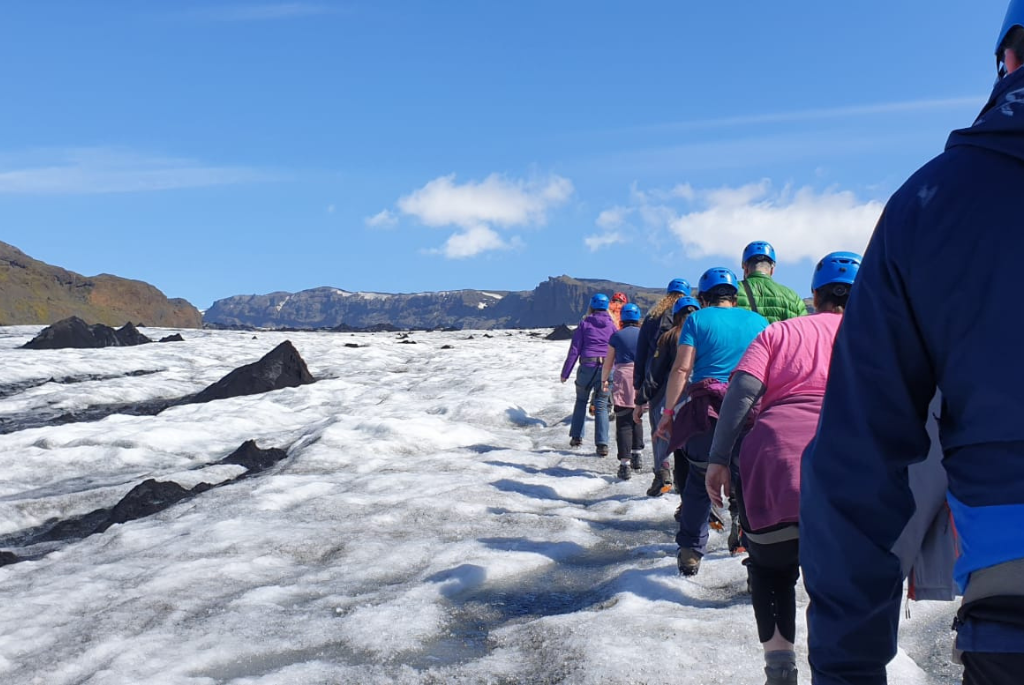
During your glacier hiking exploration, you’ll find ice formations, crevasses and blue ice. The best way to see it is up close so strap on your crampons and grab an ice pick and try your hand at ice climbing!
Thingvellir national park
At Thingvellir national park you will find stunning waterfalls and incredible panoramic views as you follow a walking trail. Spring to Autumn is a great time to visit as you’ll have the best chance of good weather forecasts meaning the roads and paths will be open.
There’s plenty to see and do at Thingvellir national park including:
Thingvallavatn Lake- Iceland’s largest lake offers spectacular views, the perfect landscape for your October trip
Almannagja- Almannagja is a fissure between the Eurasian and north American tectonic plates which slowly drifted apart leaving the edges of each plate exposed.
Hakid- This newly built viewing platform is a great place to look over Thingvellir national park.
Oxararfoss- The Oxararfoss waterfall is a top attraction of the park and can be reached via a mostly flat hiking trail.
Althingi- ‘Althingi’ translates as ‘parliament’ and this is where you can see where gatherings were held in the 19th century for local people to make important decisions in Icelandic history.
Snorkelling at Thingvellir
Another one of our favourite activities is snorkelling at Thingvellier. Here you can float over lava, swim between volcanic canyons and swim in the clear waters that flow between the North American and Eurasian continents!
Visit Jokulsarlon glacier lagoon
If you’re visiting South East Iceland in October, the Jokulsarlon glacier lagoon is the perfect activity. You’ll see free-flowing icebergs and can explore the lagoon on boat tours. If you’re lucky you may spot some seals!
Northern lights tour
If you’re going to Iceland, you’ll probably want to catch a glimpse of the mesmerizing Northern Lights in the night sky. September and October is a great time of year to do this because they’re the only months where the Northern lights are visible while the lakes are ice free, meaning that the lights are reflected in the water at the same time.
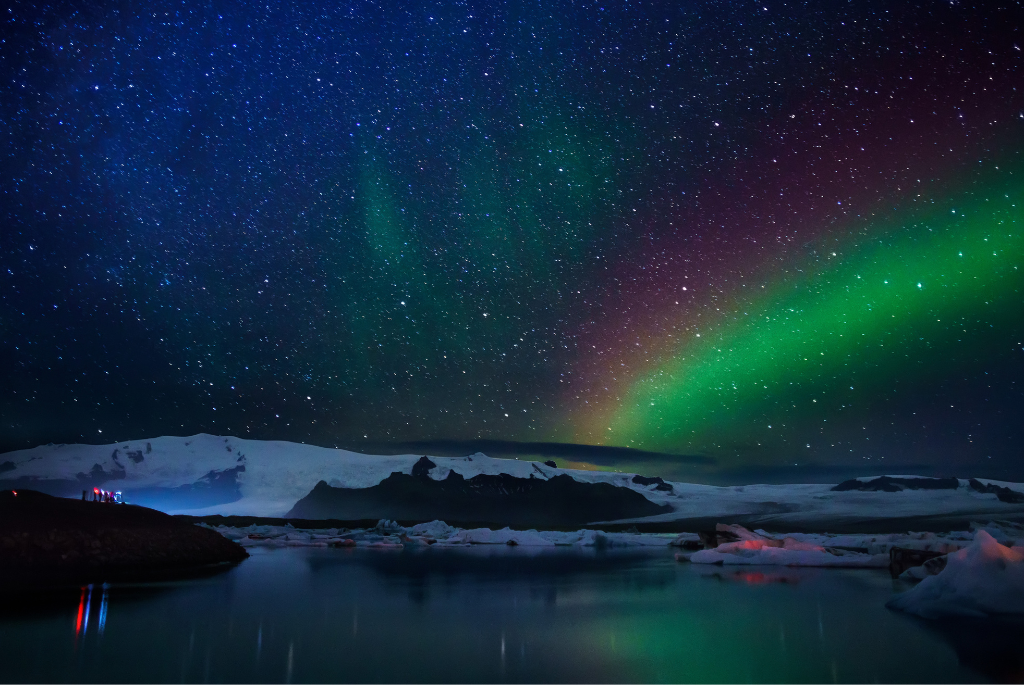
Instead of booking a northern lights tour, we recommend staying in rural accommodation for part of your trip to experience this spectacular phenomenon for yourself.
Walk through Glanni Forest
Feeling adventurous? Why not walk through Glanni forest. We love this off-the-beaten-track route that leads to one of Iceland’s lesser-known waterfalls. Glanni waterfall sits on an ancient lava field and, according to Icelandic folklore, is the dwelling place for elves and trolls!
If you’re visiting Iceland in October and decide to visit Glanni Forest, you’re likely to see salmon jumping out of the river, too.
Walk from Hellnar to Arnarstapi
Iceland in October offers great weather conditions to explore by foot in comparison to the colder winter season. We recommend the coastal walk of Hellnar to Arnarstapi to see some excellent snippets of the Icelandic landscape. The path is lined with basalt columns and you’ll have a clear view of the Atlantic ocean.
Visit the Asbyrgi Canyon
The Asbyrgi canyon is a 3.5 km long and 1 km wide glacial canyon that’s part of the Vatnajökull National Park. If you’re visiting Iceland in October, you can access it by car if you’re in the region of Myvatn.
Geologists estimate that Asbyrgi’s horseshoe shape began to form just after the last Ice Age, following a glacial flooding of the Jökulsá á Fjöllum river. Then, 3,000 years ago, the process repeated itself further sculpting the unique gorge that can be seen today.
However Icelandic folklore offers the theory that the horseshoe shape was created by Odin’s eight-legged horse as it sprinted across the sky.
Spot some Turf houses
Icelandic turf houses or ‘torfbæir’ offer a glimpse into Iceland’s architectural and cultural past. With an unpredictable climate and lack of building materials, early Icelanders had to be creative when building their homes. Their turf houses were built by stacking flat stones to create the foundation and wood to create frames, the homes then get covered with several layers of turf.
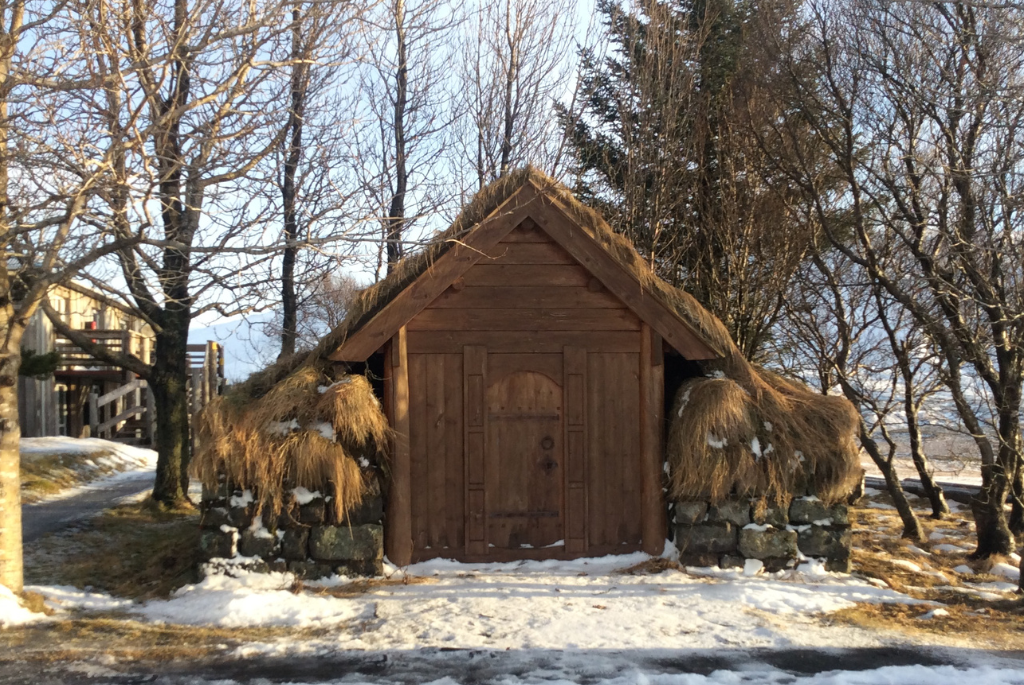
Turf roofs are still found around Iceland today. Some turf houses with traditional construction are still in use for storage or farm buildings or are preserved in their original form to offer a great insight into what the country was like before it became the modern tourist destination it is today.
If you’re visiting Iceland, look out for some as they’re a perfect reminder of the hardships and resilience of previous generations.
See Kerið Crater
Kerið Crater is a perfect spot for any keen photographers who visit Iceland! The vivid red colour contrasts dramatically against its surroundings and the azure blue waters within the crater lake.
Kerið Crater is approximately 55 metres deep, 170 metres wide and 270 metres in circumference, but the magnitude of Kerið truly has to be seen to be believed.
The crater is located in the the Grímsnes area of South Iceland and is near the three major sites that make up Iceland’s Golden Circle, so it’s often offered as an extra stop on a golden circle tour.
Drive the South Coast ring road
Want a well-deserved rest from hiking? Jump in the coach and catch a glimpse of Iceland’s famous Ring Road! Remember though, the October weather can be unpredictable, but if the conditions allow, you can usually drive from Reykjavik to Vik on the South coast but your guide will always check before travelling.
Reykjanes peninsula
If you’re staying in the capital city or visiting Reykjavik, you may want to add a visit to the Reykjanes peninsula to your trip.
Reykjanes is home to Iceland’s main airport, Keflavik and the famous blue lagoon but here’s what else it has to offer if you’re staying in Iceland in October:
- Fagradalsfjall volcano and lava fields
- Kleifarvatn lake
- Bridge Between Continents
- Krýsuvík & Seltún geothermal areas
- Reykjanestá cliffs
- Grindavík
At this time of year, the mosses and heather plants turn bold orange and bronze, beautiful!
Horseback riding
Icelandic horses are notably more curious, intelligent and independent than other horse breeds, after arriving on the very first settler’s ships, they’ve remained in the country ever since. There are many horseback riding activities available in Iceland in October and it’s a fantastic way to learn about the Icelandic horse while exploring the country.
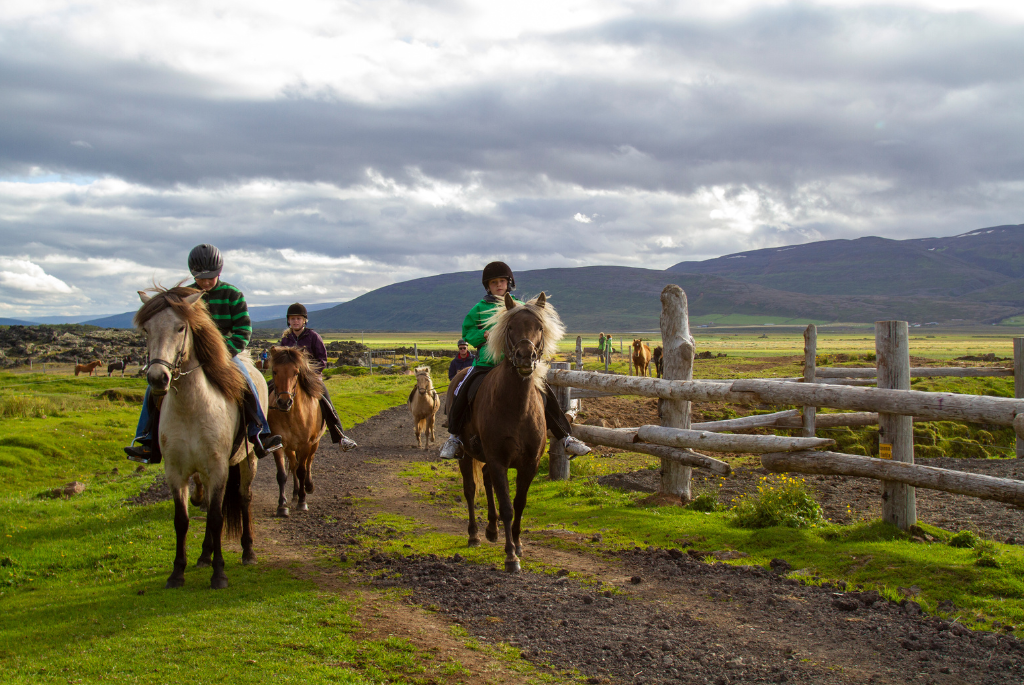
Turn to page 15 of our activities brochure to learn more about horseback riding in Iceland in October.
Iceland in October: For geographers
Iceland is a playground for geographers and geologists, offering a fascinating landscape like no other country.
From beautiful black sand beaches to magnificent waterfalls, here are some of our favourite activities for geographers and school groups to add to their itinerary when visiting Iceland in October.
Skogafoss
Skogafoss is on most geographers bucket list. Skogafoss is one of the most photographed waterfalls in Iceland, and with good reason, too. If you visit Iceland in October, you’ll be able to climb the staircase next to the falls to watch the water rush over the cliff. The waterfall truly captures the beauty of Icelandic nature!
Námaskarð
Námaskarð Pass is a geothermal area on the mountain Námafjall, in north Iceland which is connected to the Krafla volcano system Námaskarð. If you visit Iceland in October, you’ll notice the vivid red, orange and green streaks of Námaskarð dyed by the elements brought up through the steam.
Connected to the Krafla volcano system, Námaskarð is home to many hot springs and fumaroles. But it stands out because of the intense smell of sulphur which is a constant reminder of the powerful forces occurring beneath the surface.
Hveragerdi geothermal area
One of the gems of Hveragerdi town is its geothermal area. The hot springs and bubbling mud pools are a powerful (and pungent) reminder of the power beneath the ground. This power is harnessed by the Icelandic people at sights like the Krafla geothermal power station.
The area is fenced off for safety so if you visit Iceland in October, check the opening hours with your guide, these can be found on the park’s Facebook page.
Seljalandsfoss
Ever wondered what it’s like to be inside a waterfall? Well, a visit to Seljalandsföss is possibly the closest you can get!
The waterfall has a whopping 60m cascade, but it’s unique because you can follow a pathway behind the curtain of water… Just don’t forget your waterproof clothes!
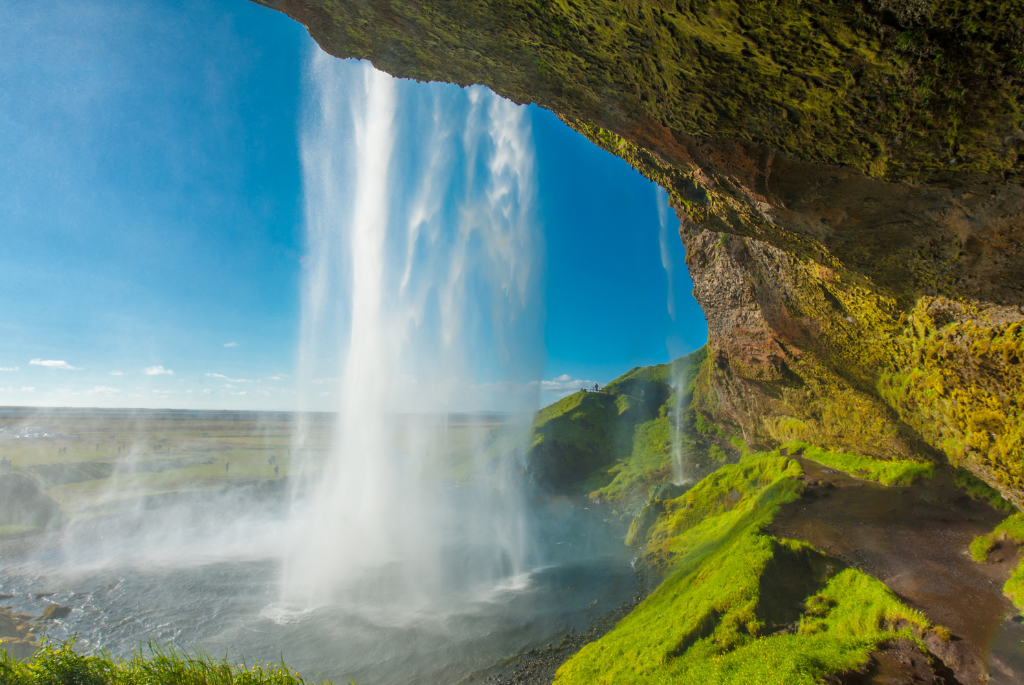
Located just off Route 1 in the south coast, it’s part of the river Seljalandsá which has its origins underneath the glacier Eyjafjallajökull. Although summer is a popular time to visit the falls, it stands out in the October weather, especially when the icy waters are illuminated by the floodlights… magical!
Visit Hellisheidi
If you visit Iceland and want to understand more about the country’s forward thinking when it comes to sustainable energy, a trip to Hellisheidi geothermal power station is the activity for you. The power plant is one of the top 10 largest in the world that generates 303MW of electricity and 400MW of thermal energy.
The power harnessed at Hellisheidi is one of Iceland’s most abundant resources. You can chat to the staff who will explain the importance of sustainable energy and how the power plant operates.
Dyrholaey
Dyrholaey is a small peninsula and former island on the south coast which is thought to have been created in a submarine eruption. Here you will find fascinating dramatic coastal scenery such as high cliffs, rock arches and stacks.
If you’re in Iceland in October and would like to visit Dyrholaey, keep in mind that it has limited access which your guide will check before you leave.
Sólheimasandur
Sólheimasandur is a glacial outwash plain so when eruptions happen under Mýrdalsjökull (a nearby glacier), the floodwater rushes across this area before reaching the sea. Many geographers find this area fascinating because the volcano beneath Mýrdalsjökul, Katla, is Iceland’s most active and unpredictable volcano. Because of this, there are no settlements on Sólheimasandur, which is part of its haunting beauty that’s often compared to a lunar landscape.
Your guide will be checking conditions for Sólheimasandur all year round.
Visit a Black sand beach
Iceland attracts geographers all year round due to its striking volcanic landscape, with one of the most iconic being the black sand beach.
Here are some beautiful black sand beaches to check out in Iceland in October:
Reynisfjara- Famous for its twisting basalt rock formations caused by volcanic eruption and sea stacks, this black sand beach is an experience like no other. It was also one of the filming locations for the Game of Thrones series.
Stokksnes- Where snow covered mountains meet the sea, this black sand beach is breath taking and a hidden gem off the east coast of Iceland.
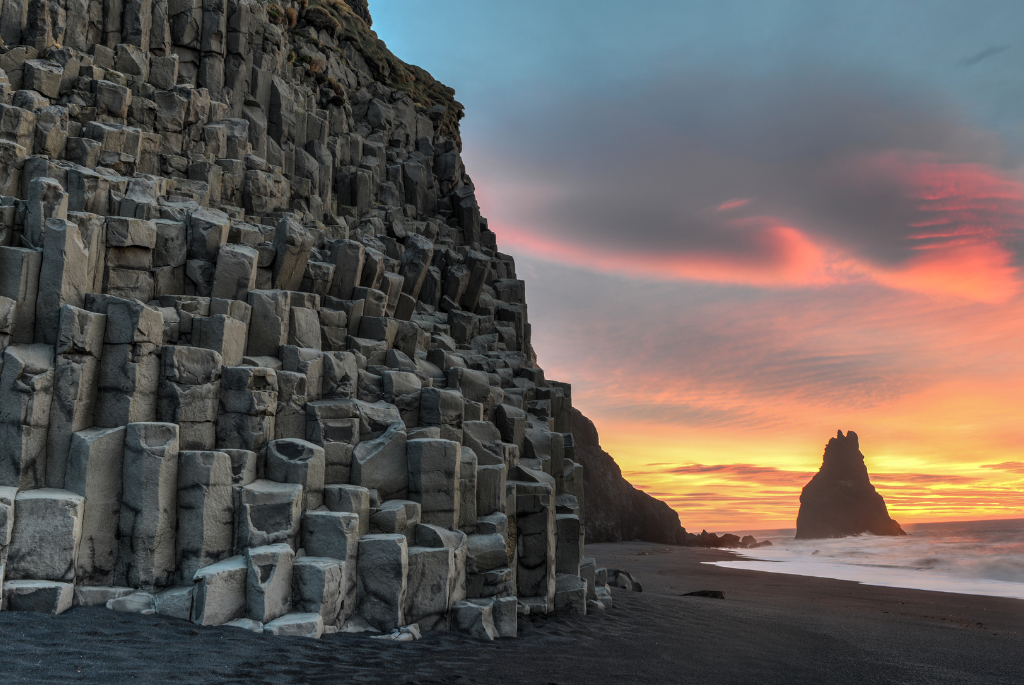
Djúpalónssandur- This black sand beach is great if you’re heading west and looking for a more dramatic experience! Located on the Snæfellsnes peninsula, Djúpalónssandur is known as the Black Lava Pearl beach because it’s made of small black smooth pebbles called pearls of Djúpalón.
Seltjörn- If you’re staying in Reykjavik and not planning to venture out, this black sand beach is a 10-minute drive from the city centre.
Stokksnes peninsula
Stokksnes peninsula is a lesser known location in Iceland which is home to Vestrahorn, one of Southeast Iceland’s most stunning mountains. With peaks of 454 metres, cliffs rising from the sides of a lagoon and surrounding black sand beach, it’s a must-see for Iceland in October.
Not only does Stokksnes’ landscape blow geographers away, but it also has a fascinating history that stretches back to the 9th century and being a vital location for the British army during World War 2.
Dettifoss
Dettifoss is the most powerful waterfall in Europe and is fed by the powerful glacier river, Jökulsá á Fjöllum. The thunderous fall has an average water flow of 193 metres cubed per second, is 100 metres wide and plummets 45 metres into Jökulsárgljúfur canyon.
Dettifoss is a great activity for those in Iceland in October but if you’re visiting in the winter months, always check the weather forecast first.
Godafoss
Iceland is not short of waterfalls but Godafoss is one that’s hard to beat when it comes to beauty. Meaning ‘waterfall of the gods,’ it’s easy to see how it got it’s name. This horseshoe-shaped waterfall cascades approximately 30 metres wide and plummeting 12 metres into a picturesque pool.
Diamond beach
The diamond beach is a strip of a black sand beach that’s part of the Breiðamerkursandur glacier plain on the south coast. Here, the icebergs from the Jökulsárlón glacier lagoon wash up on the shore to create a dazzling diamond-like landscape. Diamond beach is a popular spot for photographers because the sparkling ice creates an amazing contrast against the black sand beach.
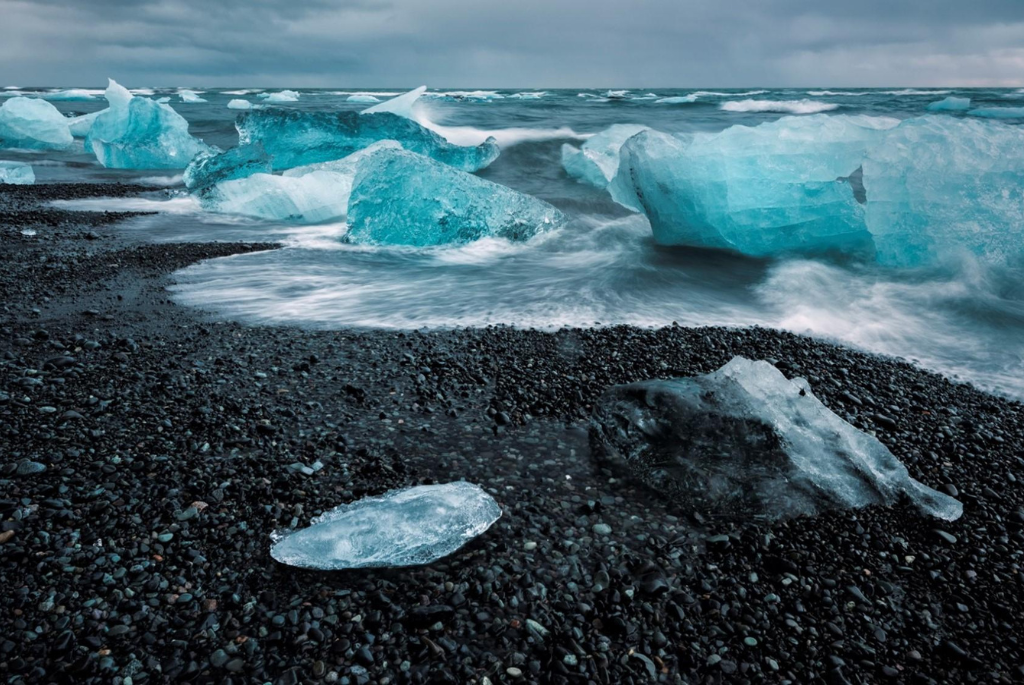
Diamond beach is popular in the summer months of June and August so if you’re coming to Iceland in October, the beach is quieter.
Find The Secret Lagoon
The Secret Lagoon, or Gamla Laugin as it’s locally known, is the oldest swimming pool in Iceland. It was made in 1891 at Hverahólmi, a geothermal area near Flúðir. The water supply comes from Vaðmálahver, Básahver, or Litli Geysir.
The warm water, rich in sulphur, stays between 38 and 40 degrees all year round but opening times for lagoons in Iceland in October vary.
Walk through Reykjadalur Valley
A walk through the Reykjadalur valley captures the beauty of Iceland in October. You’ll come across hot springs and mud pools, which are a fantastic opportunity to understand the geothermal activity underneath the ground causing these fascinating geographical features above the surface.
Hraunfossar
Translated as ‘Lava Falls’ in English, Hraunfossar is a series of waterfalls created by rivulets streaming out of the Hallmundarhraun lava field. These ribbons of water cascade over the lava formations into the Hvita River from ledges of less porous rock in the lava.
If you’re staying in Iceland in October, the orange Autumnal leaves behind Hraunfossar create a stunning contrast against the flowing water.
The Icelandic Lava Show
The Icelandic Lava Show is a chance to get up close to real lava! The educational show offers valuable insight into different types of lava and how it’s formed. Receiving multiple awards and recognition for its educational and cultural value, it’s the perfect activity to add to any geographers itinerary!
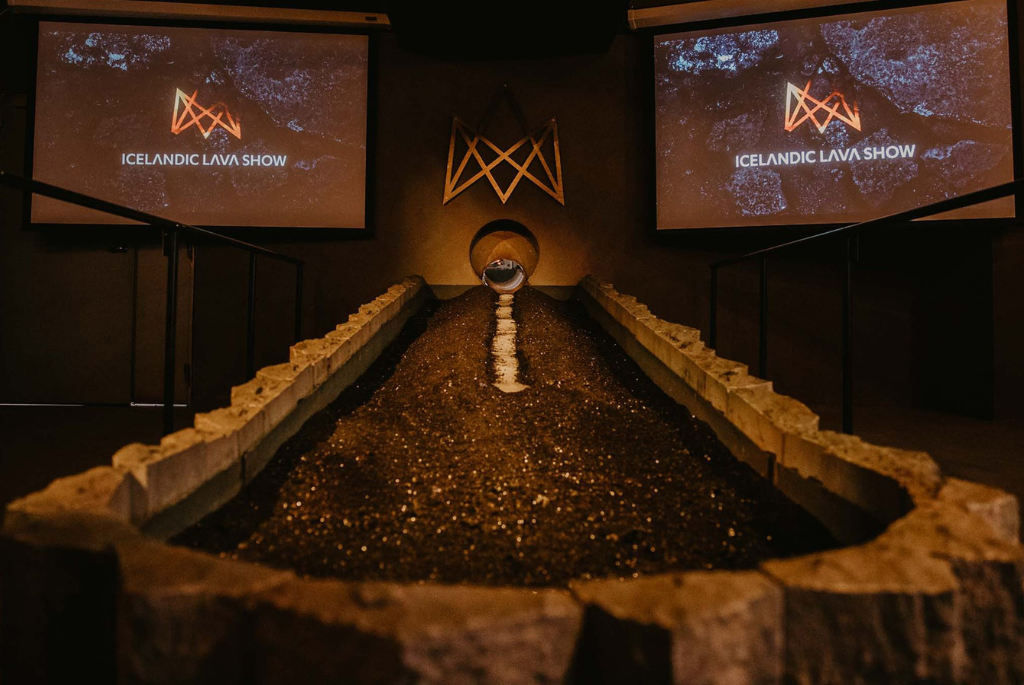
Barnafoss
Barnafoss is a rapid waterfall in West Iceland. It’s tumbling, white water-flowing river that offers contrasting scenery and landscape to its neighbour, Hraunafossar. It’s known for its dark history in folklore and the stark difference between Hraunfossar, which is just metres away, making it an excellent example of Iceland’s ever-changing landscape.
Grabrok Crater
Grabrok crater is part of the Ljosufjoll volcanic system and rises 170m above the ground. These giant volcanic craters were formed approximately three thousand years ago from a fissure eruption. From the footpath, you can gaze into what’s left of the volcano. Iceland in October offers some fantastic scenery and the view from the top of the crater that overlooks the Borgarfjordur countryside is no different.
Tjornes Peninsula
Tjornes is a small peninsula in the North of Iceland near Husavik town. Tjornes is known for its impressive geology and vibrant birdlife. If you’re visiting Iceland in October, we recommend taking in its beauty from the viewing platform on Hringsbjarg (on the east side of the peninsula) where you might also see some Icelandic puffin!
Hveragerdi Town
Hveragerdi is a town in the southwest of Iceland and is often called ‘the Earthquake Town’ due to the active geological and geothermal forces. It’s a great location to understand how the locals have adapted to living in tectonically active areas. You’ll also enjoy its surrounding hills, hot springs and greenhouses lit by renewable energy.
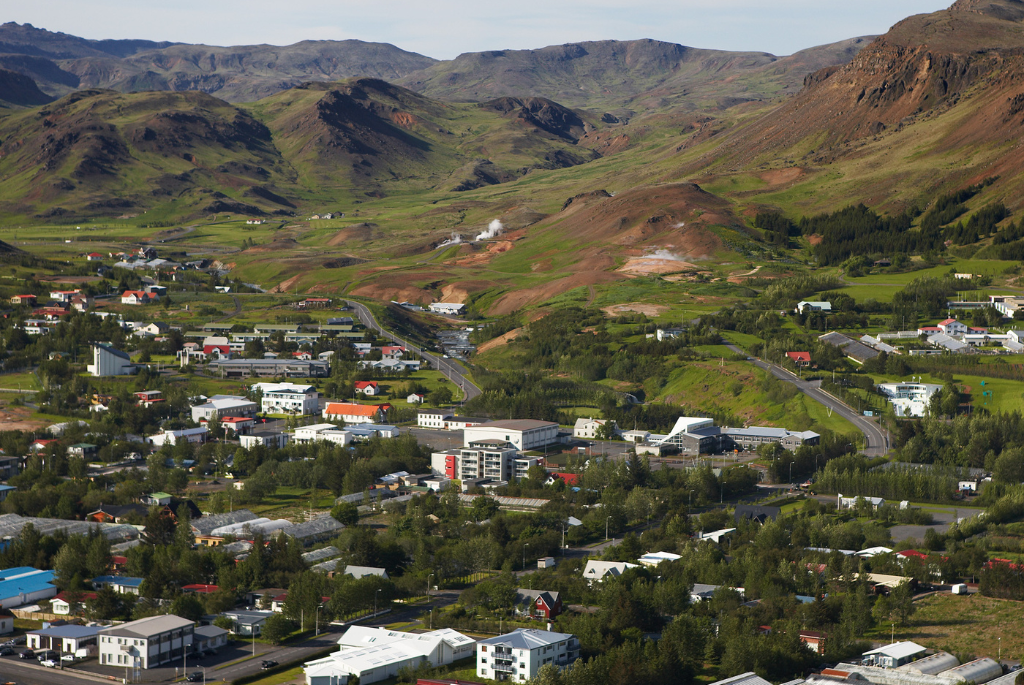
Learn at the Eldheimar exhibition
For those rainier days in Iceland in October, head to the Eldheima exhibition. The exhibition tells the story of the volcanic eruption in Vestmannaeyjar in 1973. You’ll get a glimpse into the impact the eruption had on human life and the environment and why it’s known as one of the biggest natural disasters in Icelandic history.
The exhibition is open daily all year round and from mid October to mid April, you can visit it between 1pm and 4:30pm.
Iceland in October: For adventurers
Iceland has always been a popular destination for the adventurous. Here are some of our favourite activities for Iceland in October if you love exploring new cities, understanding their history and soaking up new cultures.
Imagine peace tower
The Imagine Peace Tower is a memorial to John Lennon from Yoko Ono, located on Viðey Island in Kollafjörður Bay. The tall tower of shimmering lights are lit every year on October 9th (John Lennon’s birthday) and can be seen from the city.
The Imagine Peace Tower can be spotted on clear nights as well as through rain or snowfall because the beams dramatically light up the sky!
Blue Lagoon
The Blue Lagoon is one of the most well-known geothermal spas found on the Reykjanes Peninsula that attracts people from all over the world. The water is naturally heated by geothermal energy and is usually around 37-39 degrees Celsius making it the perfect activity to warm up in Iceland in October.
Hot springs
If you don’t get chance to visit the Blue Lagoon, there are many natural hot springs all over the country to take a dip in.
Even in the chillier months, the hot springs are a popular activity. Here’s a few you might want to check out in Iceland in October:
Seltún
Hrunalaug
Sky lagoon
Hvammsvik
Seljavallalaug
Landmannalaugar
Deildartunguhver
Reykjadalur Steam Valley
Lake Mývatn Nature Bath
Kvika Geothermal Footbath
Explore Reykjavik
Reykavik is a must if you’re visiting Iceland in October. The city is incredibly colourful at this time of year with Rainbow Street making the perfect back drop for the golden autumnal leaves!
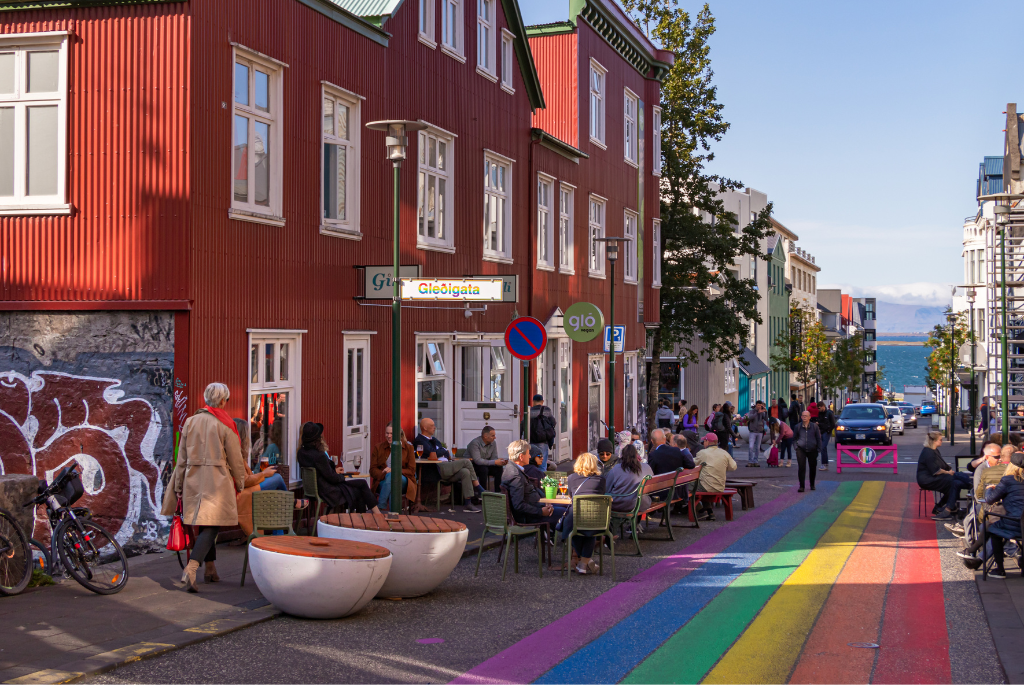
Krauma Baths
The Krauma Baths are West Iceland’s answer to the Blue Lagoon, you can indulge in the saunas and hot tubs for a relaxing activity. The geothermal spa is fed by the powerful Deildartunguhver hot spring and is a great way to warm up in the cooler Iceland weather.
Reykjavik International Film Festival
If you’re visiting Iceland in early October, you’ll be able to catch the Reykjavik International Film Festival which runs from 28th September-8th October. The Reykjavik International Film Festival (or RIFF) is one of the biggest events in Iceland where locals and tourists can enjoy cinema, meet directors, attend workshops and exhibitions and watch the newest international filmmaking in unlikely venues like swimming pools and barns.
Selfoss Town
Selfoss is the largest town outside the capital city, Reykjavik and is a cultural hub known for the Sumar á Selfossi (summer in Selfoss) festival. That’s not to say you shouldn’t explore Selfoss if you’re heading to Iceland in October, though, as there’s plenty to see and do.
Visit the Fridheimar greenhouses
Your visit to Fridheimar Greenhouses will be an unexpected highlight. Here, their famous tomatoes are grown no matter what the season , using state-of-the-art technology in an environmentally friendly way. You can learn about the growth of the tomatoes from ‘seed to soup’ before sampling some yourself!
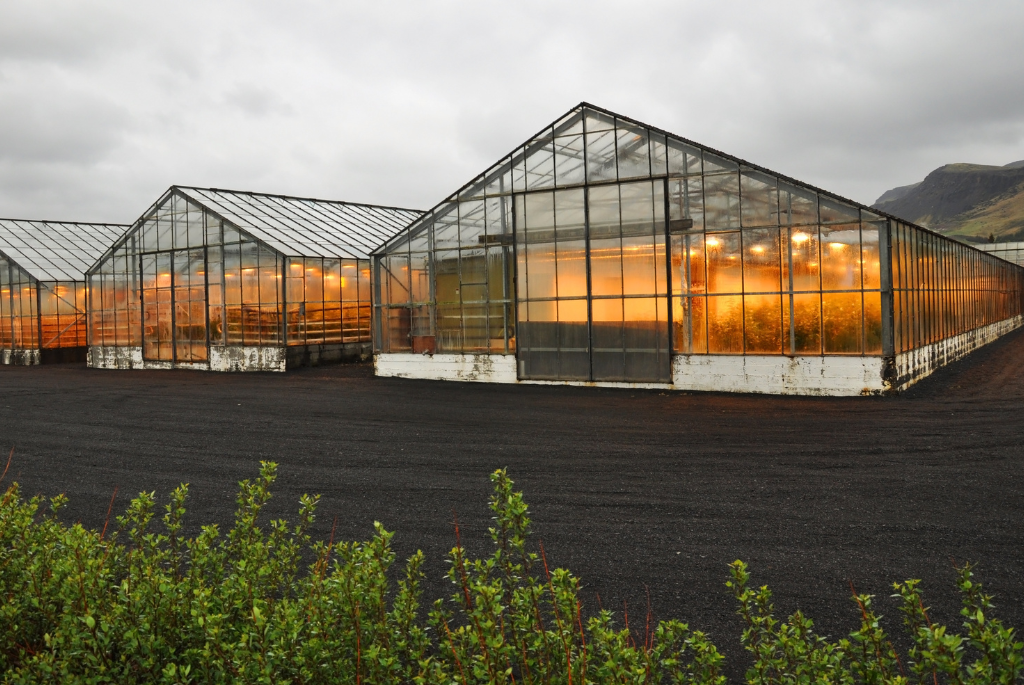
FlyOver Iceland
FlyOver Iceland is an unforgettable experience that gives you the feeling of flying! You’ll hang suspended in front of a 20-metre spherical screen as you watch an exhilarating journey across Iceland. You’ll be fully immersed as special effects like wind, mist and motion simulate the sensation of flying.
Visit Borgarnes
Borgarnes is a town located on a peninsula at the shore of Borgarfjordur. With less than 2,000 people, the small settlement is full of culture and history with deep routes in Iceland’s Viking history. If you’re staying in Iceland in October, we recommend taking a trip to Borgarfjordur to see the Settlement Centre, museums and galleries.
Public swimming pools
You may think that the Iceland weather isn’t ideal for a dip in a pool, but swimming is a daily routine for many locals. For years, Icelandic’s have enjoyed bathing in geothermally heated water, even during the cold winters. Immerse yourself in this part of the culture by visiting a public swimming pool.
Here are some of the most popular public swimming pools:
Sundhollin
Lagafellslaug
Vesturbaejarlaug
Seltjarnarneslaug
Sundlaug Kopavogs
Whale watching
Although peak whale watching season is summer, you can usually spot them in October. Over 20 species of whales, dolphins and porpoises live in Icelandic waters and with some luck, you could see orcas, blue whales, and beaked whales.
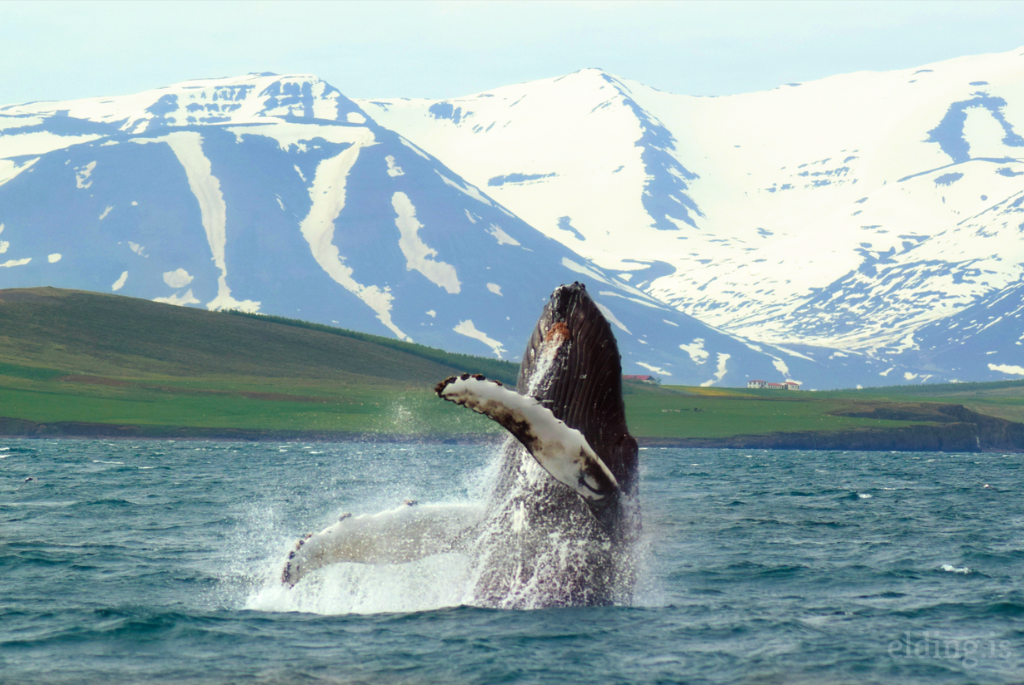
Most whale watching tours from Reykjavik head into Faxafloi Bay where humpback whales, minke whales and dolphins are often seen. Or, if you’re in North Iceland, whale watching tours from Akureyi, can take you into Eyjafjordur fjord where humpback whales are commonly spotted.
Check this helpful whale watching tour calendar for daily weather forecasts.
KIDKA wool shop and factory
If you’re looking for something different to add to your Iceland in October itinerary, why not visit the KIDKA wool factory in Hvammstangi? You’ll get an insight into authentic Icelandic wool production as you learn about their forty year-old tradition.
Explore Akuryeri
Akureyi is the capital of the North, easily recognised by it’s brightly coloured wooden houses. You can explore the major spots by foot which include a botanic garden, museums and hiking trails.
Glumbaer turf farm
Wandering through the maze of tiny rooms and passages in one of Iceland’s best-preserved turf farms you’ll get a feel for how Icelandic life was for centuries. The buildings are packed with original artefacts from a self-sufficient lifestyle where nothing was wasted – an interesting comparison with life today.
Visit Heimaey
Located in the Westman Islands, Heimaey is one of Iceland’s best kept secrets! If you visit Iceland in October, you may see:
- The island’s puffin colony
- The Eldfell crater (created by the 1973 eruption)
- Farmhouse ruins dating back to 900CE in Herjólfsdalur Valley
- Views of the mainland’s glaciers from the Stórhöfði viewpoint
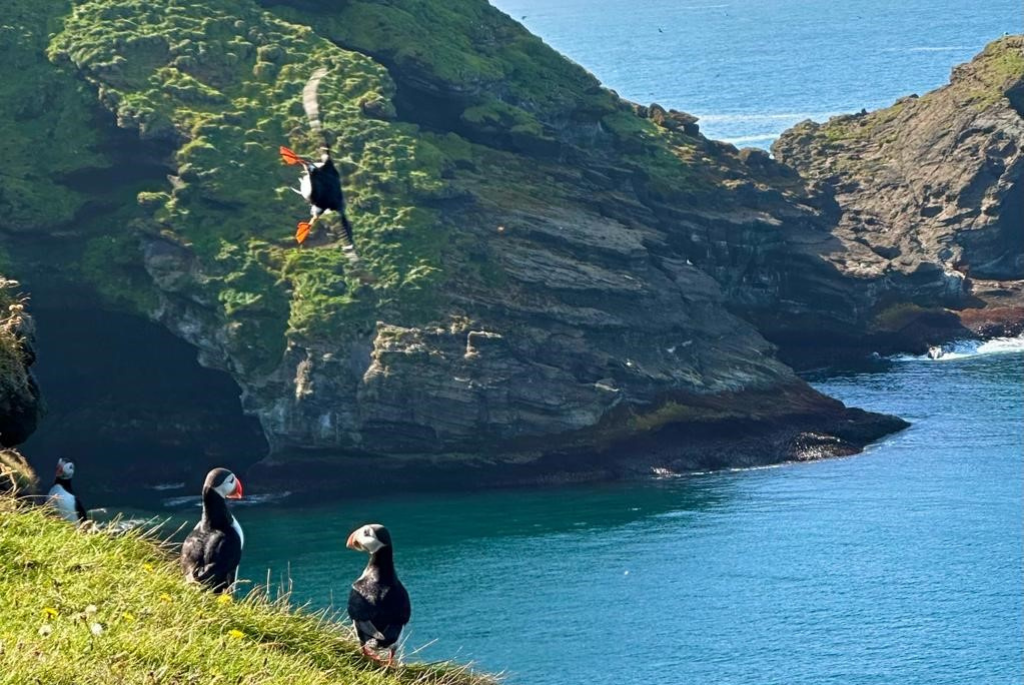
Explore the Icelandic countryside
The Icelandic countryside is a whole different world compared to the buzzing cities. In the countryside you’ll see incredible sights like Icelandic horses, magnificent waterfalls, and fjords.
The average temperature in Iceland in October is between 3 and 7 degrees Celsius, perfect for lots of outdoor adventures!
Zip lining in Akureyri
Explore Iceland in an exhilarating way by zip lining through Glerárgil (Glass River Canyon), that runs through Akureyri. There are several different options that take you over the river that vary in length, speed and location making it perfect for anyone who seeks adventure!
If you want to experience any of these activities, our Travel Specialists will put together a custom itinerary for your school. Get in touch today.
